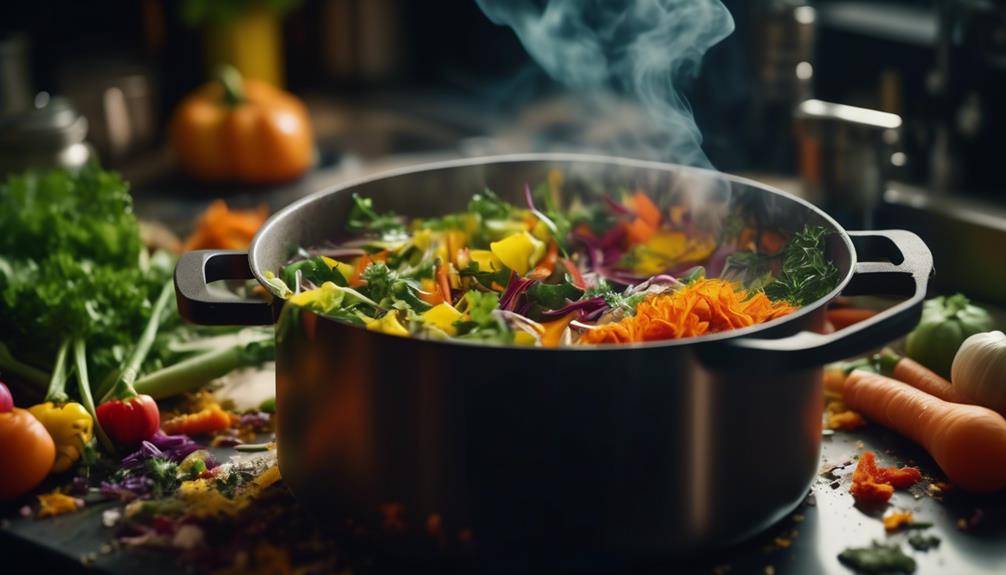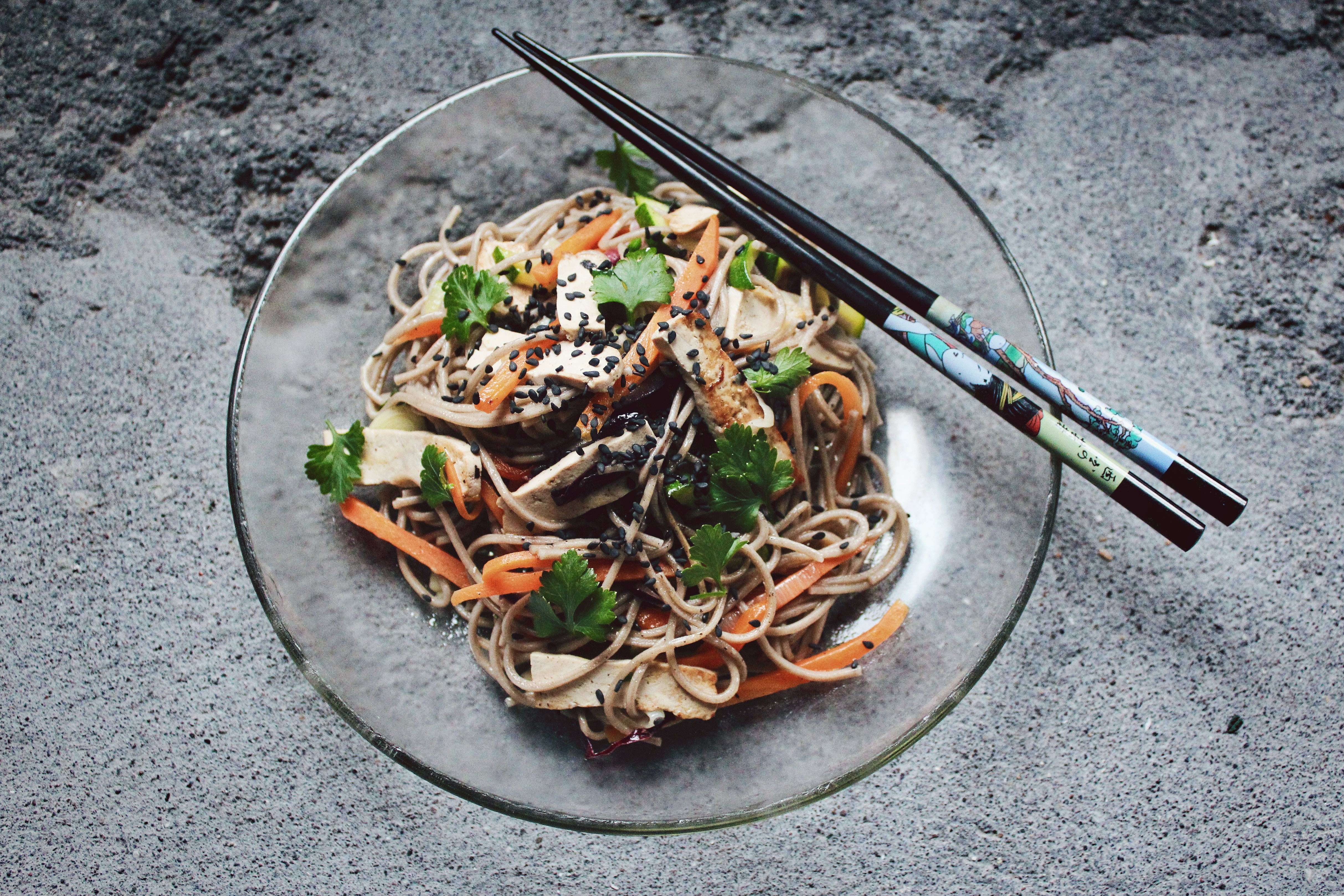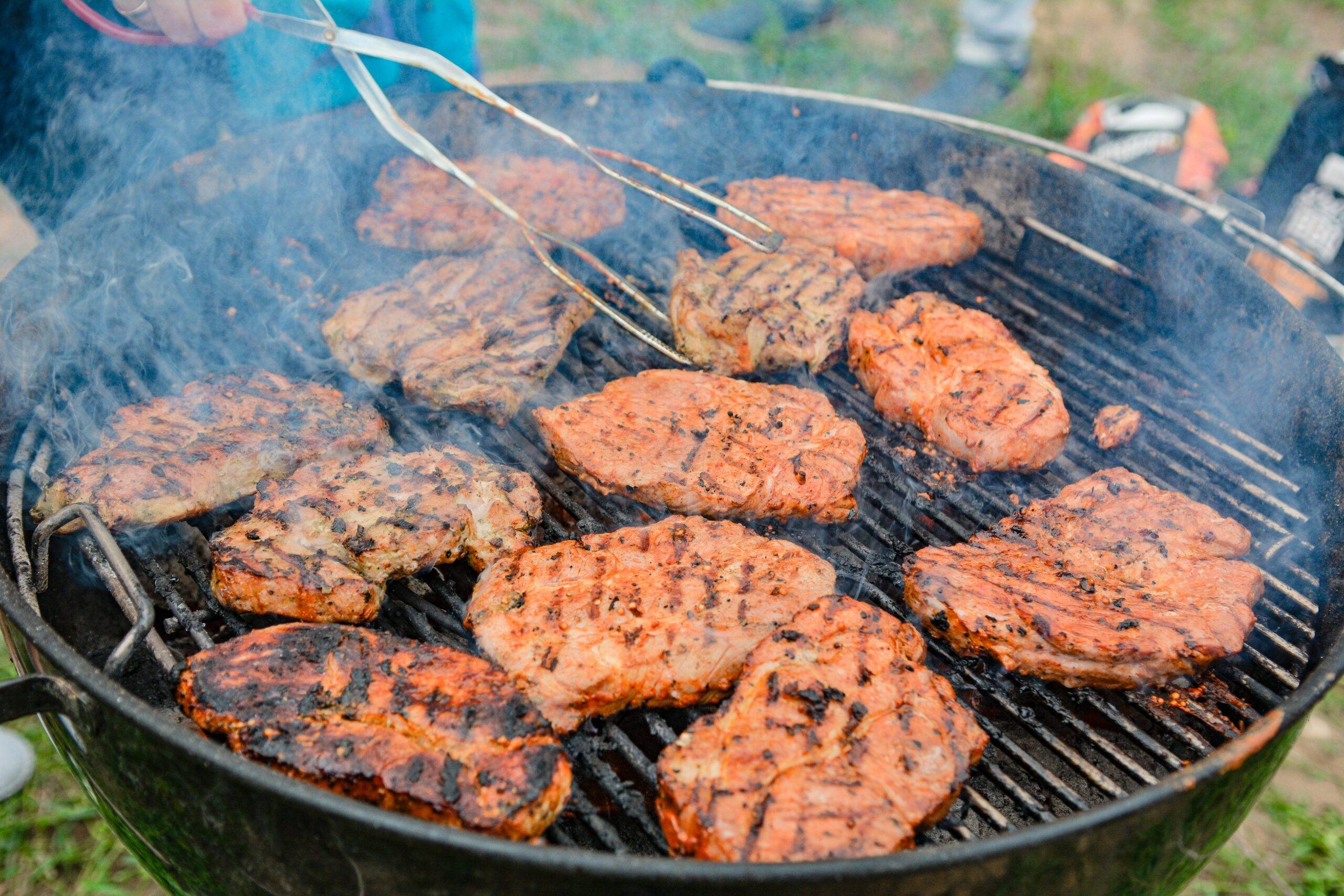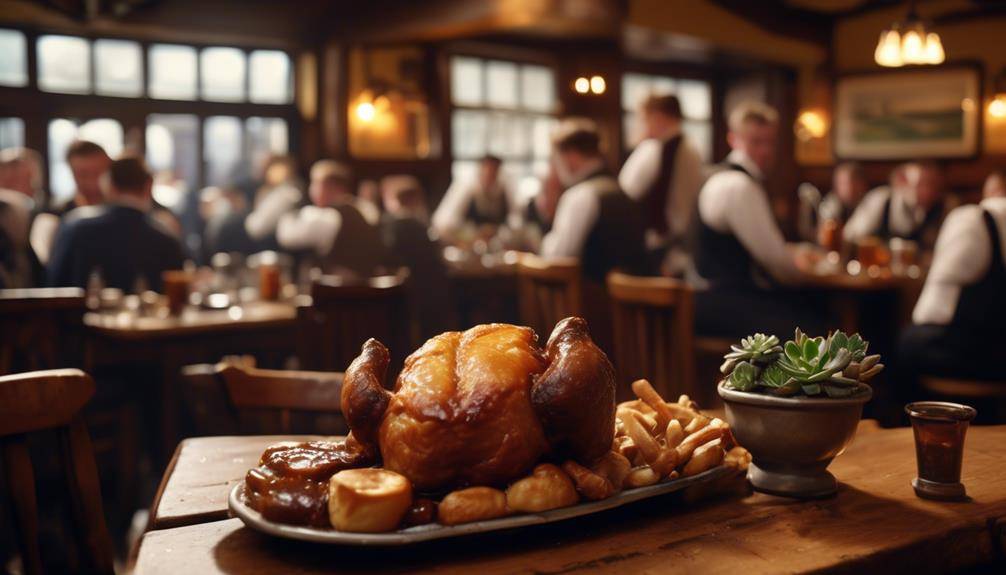Amazing Lebanese Bread And Pastries
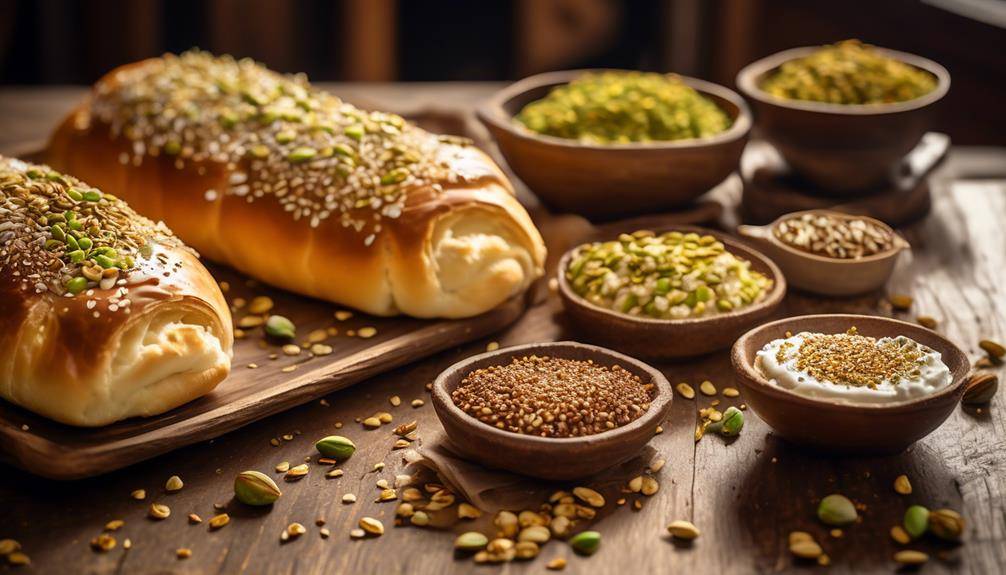
Amazing Lebanese Bread And Pastries; When it comes to Lebanese bread and pastries, prepare yourself for a delightful journey through a unique blend of flavors and textures. From the humble flatbread to the intricately crafted pastries, Lebanese cuisine offers a mouthwatering array of options that will tantalize your taste buds. But there’s more to this culinary tradition than meets the eye. Stay tuned as we uncover the fascinating history, traditional ingredients, and regional variations that make Lebanese bread and pastries a true gastronomic treasure. Get ready to embark on a culinary adventure that will leave you craving for more.
History of Lebanese Bread
Lebanese bread, also known as “khobz” in Arabic, holds a rich and fascinating history that stretches back centuries. The history of bread making in Lebanon dates back to ancient times, with evidence of bread production found in archaeological sites. Bread has always held a significant place in Lebanese culture, not just as a staple food but also as a symbol of community and tradition.
The history of bread making in Lebanon can be traced back to the Phoenician era, around 1200 BCE. The Phoenicians were skilled farmers who cultivated wheat, one of the primary ingredients for bread. They developed advanced techniques for grinding grain into flour and baking it into bread. This knowledge was passed down through generations, preserving the art of bread making in Lebanese culture.
Bread holds great significance in Lebanese culture. It is considered a symbol of hospitality and is often served as a gesture of welcome to guests. In Lebanese households, bread is an integral part of every meal, acting as a utensil to scoop up food or wrap it into a sandwich. The act of breaking bread together is seen as a bonding experience, strengthening relationships and fostering a sense of community.
Lebanese bread has its unique characteristics that set it apart from other bread types. It is typically circular in shape and has a slightly chewy texture. The dough is made from simple ingredients like flour, water, yeast, and salt, but the magic lies in the traditional baking techniques and the skill of the baker.
Traditional Ingredients Used in Lebanese Bread
The traditional bread of Lebanon is crafted using a combination of simple yet essential ingredients that contribute to its distinct flavor and texture. Over the years, the history of bread making techniques in Lebanon has evolved, but the traditional ingredients have remained constant. One of the key ingredients used in Lebanese bread is flour, typically made from wheat. The type of flour used can vary, with some bakers preferring all-purpose flour, while others opt for a mix of whole wheat and all-purpose flour for a more rustic texture.
Another essential ingredient in Lebanese bread is yeast. Yeast is responsible for the bread’s rise and gives it a light and airy texture. Traditionally, Lebanese bakers use active dry yeast, which is mixed with warm water and a small amount of sugar to activate it. This mixture is then added to the flour to start the fermentation process.
Salt is also a crucial ingredient in Lebanese bread. It enhances the flavors and helps to balance the sweetness of the dough. Additionally, olive oil is often added to the dough to give the bread a rich and slightly nutty taste.
When it comes to traditional pastry recipes in Lebanon, the ingredients used are similar to those in bread making. However, there are additional ingredients that give pastries their unique flavors and textures. For example, in pastries like baklava, a mixture of nuts such as pistachios, walnuts, or almonds is used, along with honey or syrup for sweetness. Other pastries may include ingredients like rose water, orange blossom water, or spices such as cinnamon and cardamom to add aromatic flavors.
Different Types of Lebanese Bread
Now let’s explore the different types of Lebanese bread and pastries. Lebanese cuisine is known for its wide variety of bread, each with its unique taste and texture. From the popular pita bread, commonly used for sandwiches and dipping, to the traditional mana’eesh, a savory flatbread topped with various ingredients, Lebanese bread offers a versatile range of options. Additionally, Lebanese pastries like baklava and maamoul showcase the rich heritage and exquisite flavors of the country’s dessert culture.
Popular Bread Varieties
With a rich culinary heritage, Lebanese cuisine offers a wide array of popular bread varieties that are both delicious and versatile. The history of bread making in Lebanon dates back thousands of years, with traditional bread recipes being passed down through generations. One such popular bread variety is called “Manousheh,” a flatbread topped with a variety of toppings like za’atar (a blend of herbs and spices), cheese, or minced meat.
Another beloved bread is the “Saj Bread,” which is thin and crispy, perfect for wrapping around fillings like falafel or shawarma. “Markouk” is a paper-thin bread that is commonly used to make wraps, while “Kaak” is a ring-shaped bread often enjoyed with a sprinkle of sesame seeds. These popular bread varieties are not only a staple in Lebanese cuisine, but they also exemplify the rich history and traditional recipes that have been cherished throughout the years.
Traditional Pastry Recipes
Let’s delve into the world of Lebanese pastries and explore the diverse and delectable types of bread that are an integral part of this rich culinary tradition. Lebanese pastry culture is known for its traditional pastry techniques that have been passed down through generations. One popular type of bread is called “Manousheh,” a flatbread topped with a variety of ingredients such as za’atar, cheese, or ground meat.
Another traditional pastry is “Sfiha,” a small, open-faced meat pie with a savory filling of ground beef or lamb mixed with spices and onions. “Kaak,” a ring-shaped bread covered with sesame seeds, is also a staple in Lebanese cuisine. These traditional pastry recipes showcase the skill and expertise that Lebanese bakers bring to their craft, creating mouthwatering delights that are enjoyed by locals and visitors alike.
The Art of Making Lebanese Bread
Now let’s dig into the art of making Lebanese bread. You’ll learn about the bread-making techniques that have been passed down through generations, ensuring the perfect texture and flavor. We’ll also explore traditional Lebanese recipes for bread, highlighting the unique ingredients and methods that make each one special. Get ready to discover the secrets behind this cherished culinary tradition.
Bread-Making Techniques
What are the key techniques involved in the art of making Lebanese bread? The process of making Lebanese bread involves several important techniques that contribute to its distinct flavor and texture. To begin, the bread-making equipment used plays a crucial role. Traditional Lebanese bread is baked in a dome-shaped oven called a ‘saj’, which is heated with charcoal to achieve the perfect temperature for baking.
The dough is then prepared by mixing flour, water, yeast, and salt. Kneading the dough is an essential step to develop gluten and create a soft and elastic texture. After the dough has risen, it is divided into small portions and rolled into thin rounds. These rounds are then placed on the hot saj, where they are cooked quickly, resulting in a deliciously fluffy and slightly charred Lebanese bread.
Traditional Lebanese Recipes
Making traditional Lebanese bread is an art that requires mastering the key techniques discussed in the previous subtopic, such as using a saj oven and kneading the dough to perfection. But the culinary delights of Lebanon extend beyond bread. Traditional Lebanese desserts are renowned for their rich flavors and exotic ingredients. These desserts often include a combination of nuts, honey, and aromatic spices like cinnamon and cardamom.
Lebanese pastry shops are the go-to destination for indulging in these sweet treats. Here, you can find delicious pastries like baklava, maamoul, and knefeh. Baklava is a delicate pastry made with layers of phyllo dough, filled with nuts and sweetened with honey or syrup. Maamoul, on the other hand, are small cookies filled with dates, pistachios, or walnuts. And finally, knefeh is a cheesy pastry soaked in sweet syrup and topped with pistachios. These traditional Lebanese desserts are a true delight for those with a sweet tooth. So, next time you visit Lebanon or a Lebanese pastry shop, make sure to indulge in these mouth-watering treats.
Popular Lebanese Bread Dishes
Lebanese cuisine offers a wide array of delectable bread dishes that are beloved by locals and visitors alike. These popular Lebanese bread dishes are not only delicious but also deeply rooted in the country’s culinary tradition. One of the most well-known bread dishes is manakish, a traditional Lebanese recipe that consists of flatbread topped with a variety of ingredients.
Manakish is often prepared with a base of dough made from flour, water, yeast, and salt. The dough is rolled out and then topped with a mixture of olive oil and za’atar, a blend of thyme, sumac, and sesame seeds. The bread is then baked in a hot oven until it becomes crisp and golden. Manakish can be enjoyed as a breakfast dish or as a snack throughout the day.
Another popular Lebanese bread dish is saj bread, which is cooked on a large convex griddle known as a saj. The dough for saj bread is typically made from flour, water, and salt. It is stretched out thinly and cooked on the saj until it becomes slightly charred and bubbly. Saj bread is often served with various toppings such as cheese, vegetables, or meat.
Lastly, markouk bread is a staple in Lebanese cuisine. It is a thin, unleavened bread that is typically cooked on a hot metal dome called a taboon. The dough for markouk bread is made from flour, water, salt, and sometimes olive oil. It is rolled out thinly and then cooked on the taboon until it puffs up and becomes slightly crispy.
These popular Lebanese bread dishes are not only delicious but also a reflection of the rich culinary heritage of Lebanon. Whether you’re enjoying manakish, saj bread, or markouk bread, you’ll be treated to a unique and satisfying culinary experience.
Introduction to Lebanese Pastries
Lebanon is renowned for its delectable array of pastries, which showcase the country’s rich culinary heritage and are sure to satisfy even the most discerning taste buds. Lebanese pastry history dates back centuries, rooted in a tradition of Middle Eastern sweets influenced by various civilizations that have passed through the region. Lebanese pastries are known for their intricate designs, delicate textures, and irresistible flavors. Here are some key aspects of Lebanese pastry history and techniques:
- Influences from the Ottoman Empire: Lebanese pastries have been shaped by the culinary traditions of the Ottoman Empire, which ruled the region for several centuries. Turkish techniques such as layering thin sheets of pastry dough, known as filo, are common in Lebanese pastries.
- Phoenician Origins: The Phoenicians, an ancient civilization that thrived in the region, introduced the use of honey as a sweetener in pastries. This tradition of using honey continues to this day, providing a distinct flavor profile to Lebanese pastries.
- Regional Ingredients: Lebanese pastries often incorporate local ingredients such as pistachios, walnuts, dates, and rosewater. These ingredients not only add flavor but also reflect the abundance of natural resources in Lebanon.
- Artistry and Precision: Lebanese pastry techniques require a high level of skill and precision. Pastry chefs meticulously create intricate patterns and designs, making each pastry a work of art. This attention to detail is what sets Lebanese pastries apart.
- Family Traditions: Lebanese pastry-making is often a family affair, with recipes and techniques passed down through generations. This sense of tradition and heritage adds depth and authenticity to the pastries.
Lebanese pastries are not just a delectable treat; they are a testament to the rich history and culinary expertise of the Lebanese people. From the influences of the Ottoman Empire to the artistry and precision of pastry-making techniques, Lebanese pastries continue to captivate and delight food enthusiasts around the world.
Key Ingredients in Lebanese Pastries
One of the key components that contribute to the exquisite flavors and textures of Lebanese pastries is the careful selection of high-quality and locally-sourced ingredients. Traditional Lebanese pastries are known for their rich and diverse flavors, and this is largely due to the use of ingredients that are native to the region. Popular Lebanese pastry shops pride themselves on sourcing the freshest ingredients, ensuring that each bite of their pastries is a delightful experience.
One of the essential ingredients in Lebanese pastries is phyllo dough. This thin, flaky pastry dough is made by layering sheets of dough with melted butter or oil. The end result is a light and crispy texture that adds a delightful crunch to the pastries. Another key ingredient is rose water. This fragrant water is made by steeping rose petals in water, and it is often used to flavor Lebanese pastries, giving them a distinct floral aroma.
Nuts, such as pistachios and walnuts, are also commonly used in Lebanese pastries. These nuts are finely ground and mixed with sugar and spices to create flavorful fillings. In addition, ingredients like honey and orange blossom water are used to add a touch of sweetness and enhance the flavors of the pastries.
When it comes to the selection of ingredients, popular Lebanese pastry shops prioritize locally-sourced options. This ensures that the ingredients are fresh and of the highest quality, resulting in pastries that are bursting with flavor. By using these carefully selected ingredients, Lebanese pastry shops are able to create pastries that are not only visually appealing but also incredibly delicious.
Classic Lebanese Pastry Varieties
Now that we have explored the key ingredients that contribute to the exquisite flavors and textures of Lebanese pastries, let’s dive into the world of classic Lebanese pastry varieties. Lebanese pastry makers have mastered the art of using classic pastry techniques to create a wide range of mouthwatering treats. These pastries are filled with traditional fillings that have been passed down through generations, ensuring an authentic taste that captures the essence of Lebanese cuisine.
Here are five classic Lebanese pastry varieties that you must try:
- Baklava: This is perhaps the most famous Lebanese pastry. Layers of thin phyllo pastry are filled with a mixture of finely chopped nuts, sweetened with a fragrant syrup made from sugar, water, and rose water.
- Sfeeha: These are small, savory pastries that are filled with a spiced ground meat mixture. The dough is usually made from a combination of flour, yeast, water, and olive oil. Sfeeha is often served as an appetizer or as part of a mezze platter.
- Maamoul: These delicate pastries are typically made during special occasions like Eid. They are filled with a mixture of dates, nuts, or sweetened semolina, and flavored with rose or orange blossom water. Maamoul is intricately shaped using wooden molds, resulting in beautiful patterns on the surface.
- Znoud el Sit: These are crispy, tube-shaped pastries filled with a creamy, sweetened cheese filling. The pastry is made by rolling sheets of phyllo dough, and then deep-frying them until golden brown. Znoud el Sit is often served with a drizzle of syrup or a dusting of powdered sugar.
- Fatayer: These are small, triangular pastries that can be filled with a variety of ingredients such as spinach, cheese, or meat. The dough is made from a mixture of flour, yeast, water, and oil, and the fillings are usually seasoned with herbs and spices.
These classic Lebanese pastries showcase the skill and expertise of Lebanese bakers who have perfected their craft over generations. Each bite is a delightful combination of flavors and textures that will transport you to the vibrant streets of Lebanon.
Regional Variations in Lebanese Pastries
With a rich culinary history and diverse regional influences, Lebanese pastries exhibit a fascinating array of regional variations that showcase the unique flavors and techniques found throughout the country. These regional flavor variations not only add to the culinary diversity of Lebanese pastries but also hold cultural significance, representing the traditions and customs of different regions.
In the northern region of Lebanon, you will find pastries with a strong Mediterranean influence. These pastries often incorporate ingredients such as olives, feta cheese, and fresh herbs. The flavors are bold and tangy, reflecting the region’s proximity to the sea and its reliance on fresh, local produce.
Moving towards the eastern region, the pastries take on a more Middle Eastern flavor profile. Here, you will find pastries filled with spiced meats, such as lamb or beef, and aromatic spices like cinnamon, allspice, and cardamom. These pastries are typically baked to perfection, resulting in a golden, flaky crust that is both savory and satisfying.
In the southern region, pastries are heavily influenced by the Palestinian and Syrian cuisines. These pastries often feature ingredients like za’atar, a popular Middle Eastern spice blend, and tahini, a creamy sesame paste. The flavors are rich and earthy, reflecting the region’s agricultural heritage and its use of locally grown ingredients.
In the Bekaa Valley, known as the breadbasket of Lebanon, pastries are made with a variety of grains, such as wheat, barley, and bulgur. These pastries are hearty and filling, perfect for the colder climate of the region. They are often stuffed with ingredients like spinach, cheese, or ground meat, creating a satisfying and nourishing meal.
Each region’s variation in Lebanese pastries tells a story of the people who live there and their connection to the land. These regional flavor variations not only add depth and complexity to Lebanese cuisine but also showcase the cultural diversity and significance of the country’s culinary heritage.
Techniques for Making Lebanese Pastries
Now let’s explore the techniques for making Lebanese pastries. Firstly, you’ll learn about the meticulous process of preparing the pastry dough, which involves combining flour, water, yeast, and a pinch of salt. Next, we’ll delve into the various filling and shaping techniques, such as folding, rolling, and sealing, that give Lebanese pastries their unique and delicious flavors. Finally, we’ll discuss baking and serving tips to ensure that your pastries come out perfectly golden and are enjoyed to their fullest potential.
Pastry Dough Preparation
To achieve the perfect texture and flavor for Lebanese pastries, it is essential to master the art of pastry dough preparation. The dough serves as the foundation for these delicious treats, and proper technique is crucial for a successful outcome. Here are some key pastry dough techniques to keep in mind:
- Use cold ingredients: Cold butter or shortening helps create a flaky texture in the dough.
- Handle the dough gently: Overworking the dough can lead to a tough and dense pastry.
- Chill the dough: Allowing the dough to rest in the refrigerator before rolling it out helps relax the gluten and prevents shrinkage during baking.
- Use the right flour: Opt for a high-quality pastry flour, which has a lower protein content and produces a tender crust.
- Measure accurately: Precise measurements ensure the dough has the correct consistency and texture.
Avoid these common mistakes in pastry dough preparation:
- Overmixing the dough, resulting in a tough texture.
- Adding too much flour, which can make the dough dry and crumbly.
- Rolling the dough too thin or too thick, affecting the final texture and baking time.
- Not chilling the dough adequately, leading to shrinkage during baking.
- Using warm ingredients, causing the dough to become sticky and difficult to handle.
Filling and Shaping Techniques
Mastering the art of filling and shaping techniques is essential to creating authentic and delicious Lebanese pastries. When it comes to filling techniques, there are various options to choose from. One popular method is using a mixture of ground meat, onions, and spices, which is then wrapped in dough and baked to perfection. Another filling technique involves using a combination of cheese, spinach, and herbs, creating a flavorful and savory pastry.
As for shaping methods, Lebanese pastries offer a wide range of options. You can create triangular shapes by folding the dough in half and sealing the edges, or you can roll the dough into a cylindrical shape for a different presentation. The key is to ensure that the filling is evenly distributed and that the pastry holds its shape during baking. By mastering these filling and shaping techniques, you can create exquisite Lebanese pastries that will impress your family and friends.
Baking and Serving Tips
When baking Lebanese pastries, it is important to follow these helpful tips to ensure that your pastries turn out perfectly and are served in the best possible way:
- Preheat the oven: Always preheat your oven before baking Lebanese pastries. This ensures that the pastries cook evenly and have a golden, crispy crust.
- Use parchment paper: Line your baking sheets with parchment paper to prevent the pastries from sticking and to make cleanup easier.
- Brush with egg wash: Before baking, brush the pastries with an egg wash made from beaten egg and a little water. This gives them a glossy finish and enhances the flavor.
- Rotate the trays: Halfway through baking, rotate the baking trays to ensure even browning and cooking.
- Serve warm: Lebanese pastries are best enjoyed warm. Serve them fresh out of the oven or reheat them briefly before serving.
Sweet Lebanese Pastry Delights
Indulge your taste buds with the delectable array of sweet Lebanese pastry delights. Lebanese cuisine is known for its rich and diverse flavors, and the sweet pastries and traditional Lebanese desserts are no exception. These desserts are a perfect blend of Middle Eastern and Mediterranean influences, creating a unique and satisfying treat.
One popular sweet pastry in Lebanon is called Baklava. Made with layers of phyllo dough, nuts, and honey syrup, Baklava is a rich and indulgent dessert that is sure to satisfy your sweet tooth. The combination of the crispy phyllo and the sweet, sticky syrup creates a harmonious balance of textures and flavors.
Another traditional Lebanese dessert is called Knafeh. This dessert consists of a layer of shredded phyllo dough, a layer of sweet cheese, and a layer of syrup made from orange blossom water. The result is a sweet, gooey, and creamy delight that is often enjoyed with a cup of hot tea or coffee.
Maamoul is another popular Lebanese sweet pastry. These delicate cookies are typically filled with dates, pistachios, or walnuts, and are flavored with rosewater or orange blossom water. The soft, crumbly texture of the cookie paired with the sweet, nutty filling creates a heavenly combination of flavors.
Lebanese cuisine is a treasure trove of sweet delights. From the rich and indulgent Baklava to the gooey and creamy Knafeh, and the delicate and flavorful Maamoul, these traditional Lebanese desserts are sure to satisfy your sweet cravings. So go ahead, treat yourself to these sweet pastry delights and experience the true taste of Lebanon.
Savory Lebanese Pastry Delights
Now let’s explore the savory side of Lebanese pastries, where a world of delicious flavors and mouthwatering combinations await. Lebanese cuisine is known for its rich and diverse flavors, and savory pastry variations are no exception. These pastries are not only a delight to the taste buds but also a testament to the culinary heritage of the region. Here are five traditional pastry fillings that are sure to satisfy your savory cravings:
- Meat Sambousek: These small, triangular pastries are filled with a savory mixture of ground meat, onions, and aromatic spices. The crispy pastry shell perfectly complements the flavorful meat filling, creating a delightful balance of textures.
- Spinach Fatayer: Fatayer are boat-shaped pastries filled with a variety of ingredients, and one of the most popular fillings is spinach. The combination of fresh spinach, onions, lemon juice, and spices creates a savory and tangy filling that is a vegetarian’s delight.
- Cheese Rolls: These golden and crispy rolls are filled with a mixture of creamy white cheese, such as feta or halloumi, and herbs. The cheese filling melts and oozes out as you take a bite, leaving you craving for more.
- Zaatar Manakish: This traditional Lebanese flatbread is topped with a mixture of dried thyme, sumac, sesame seeds, and olive oil. The combination of flavors is savory and aromatic, making it a perfect snack or breakfast option.
- Kibbeh: Kibbeh is a Lebanese specialty made of ground meat, bulgur, onions, and spices. It can be shaped into balls or patties and baked or fried. The crispy outer shell and flavorful meat filling make it a popular choice among savory pastry lovers.
These savory pastry variations showcase the creativity and artistry of Lebanese cuisine. Whether you’re a meat lover or a vegetarian, there’s a savory Lebanese pastry waiting to delight your taste buds. So, indulge in these traditional flavors and experience the true essence of Lebanese cuisine.
Frequently Asked Questions: Amazing Lebanese Bread And Pastries
What Are Some Popular Toppings or Fillings for Lebanese Bread Dishes?
You’ll find popular mezzes and creative fillings on Lebanese bread dishes. These toppings and fillings add a burst of flavors, from savory options like za’atar and cheese to mouthwatering combinations like falafel and tahini sauce.
Are There Any Specific Techniques or Tips for Making the Perfect Lebanese Bread?
To achieve the perfect texture of Lebanese bread, try these tips: use a combination of all-purpose and bread flour, knead the dough thoroughly, let it rise in a warm environment, and bake at a high temperature.
How Do Regional Variations in Lebanese Pastries Affect Their Taste and Appearance?
Regional influences on Lebanese pastries create unique flavor profiles and presentation. The taste and appearance of these pastries vary based on the region’s use of different ingredients, spices, and techniques, resulting in a diverse and delightful culinary experience.
Can You Provide a Recipe for a Classic Lebanese Pastry Variety?
Sure! To make a classic Lebanese pastry, start with a base of phyllo dough. Layer it with a mixture of nuts, sugar, and spices. Bake until golden brown and drizzle with a sweet syrup. Enjoy this traditional Lebanese dessert!
What Are Some Traditional Occasions or Celebrations Where Lebanese Bread and Pastries Are Commonly Served?
On traditional occasions and celebrations, Lebanese bread and pastries are commonly served. They are often filled with popular ingredients like cheese, meat, or spinach, and topped with flavorful herbs and spices.
Conclusion
In conclusion, Lebanese bread and pastries have a rich history and diverse range of flavors. The traditional ingredients and techniques used in making Lebanese bread and pastries contribute to their unique taste and texture. Whether it’s the soft and fluffy texture of Lebanese bread or the sweet and savory delights of Lebanese pastries, these culinary creations are a true delight for the senses. Exploring the regional variations and techniques behind these dishes allows for a deeper appreciation of Lebanese cuisine.



